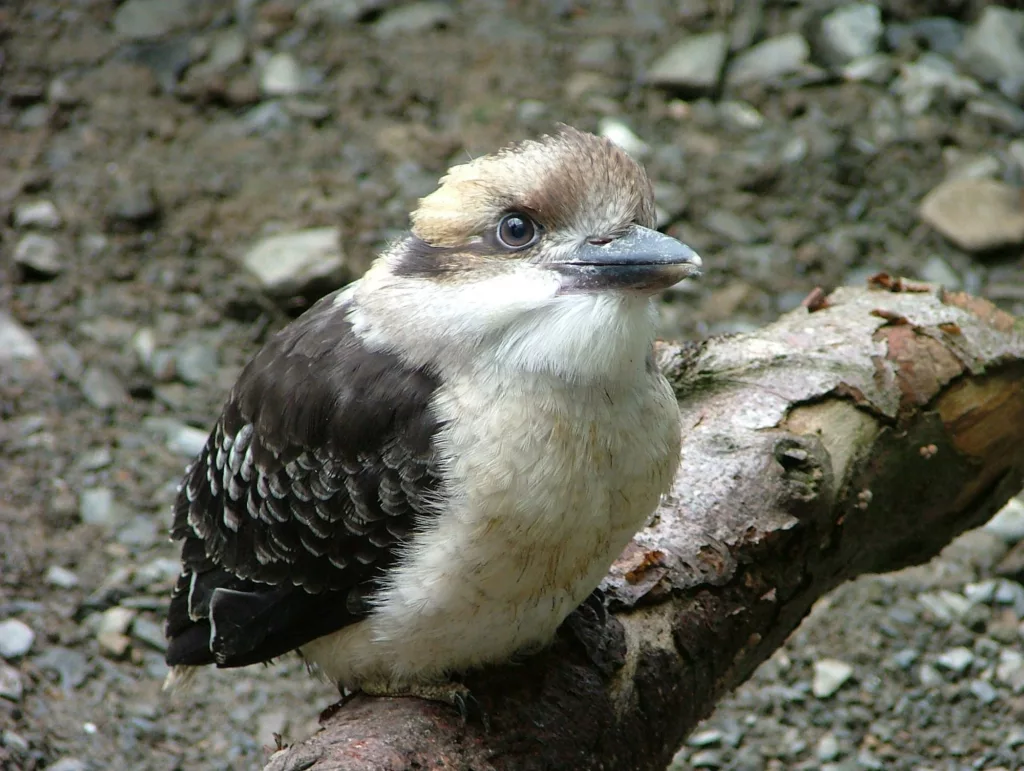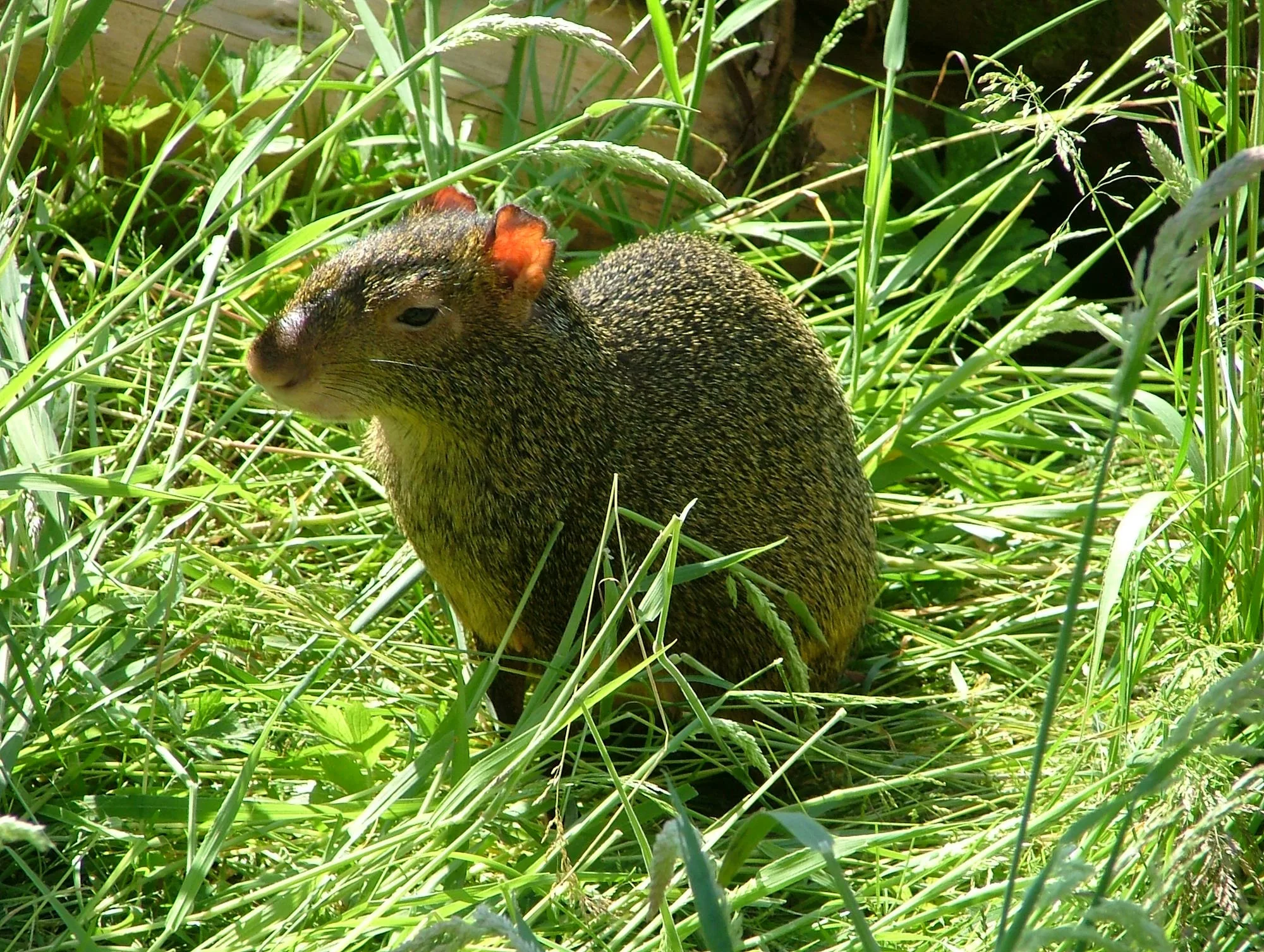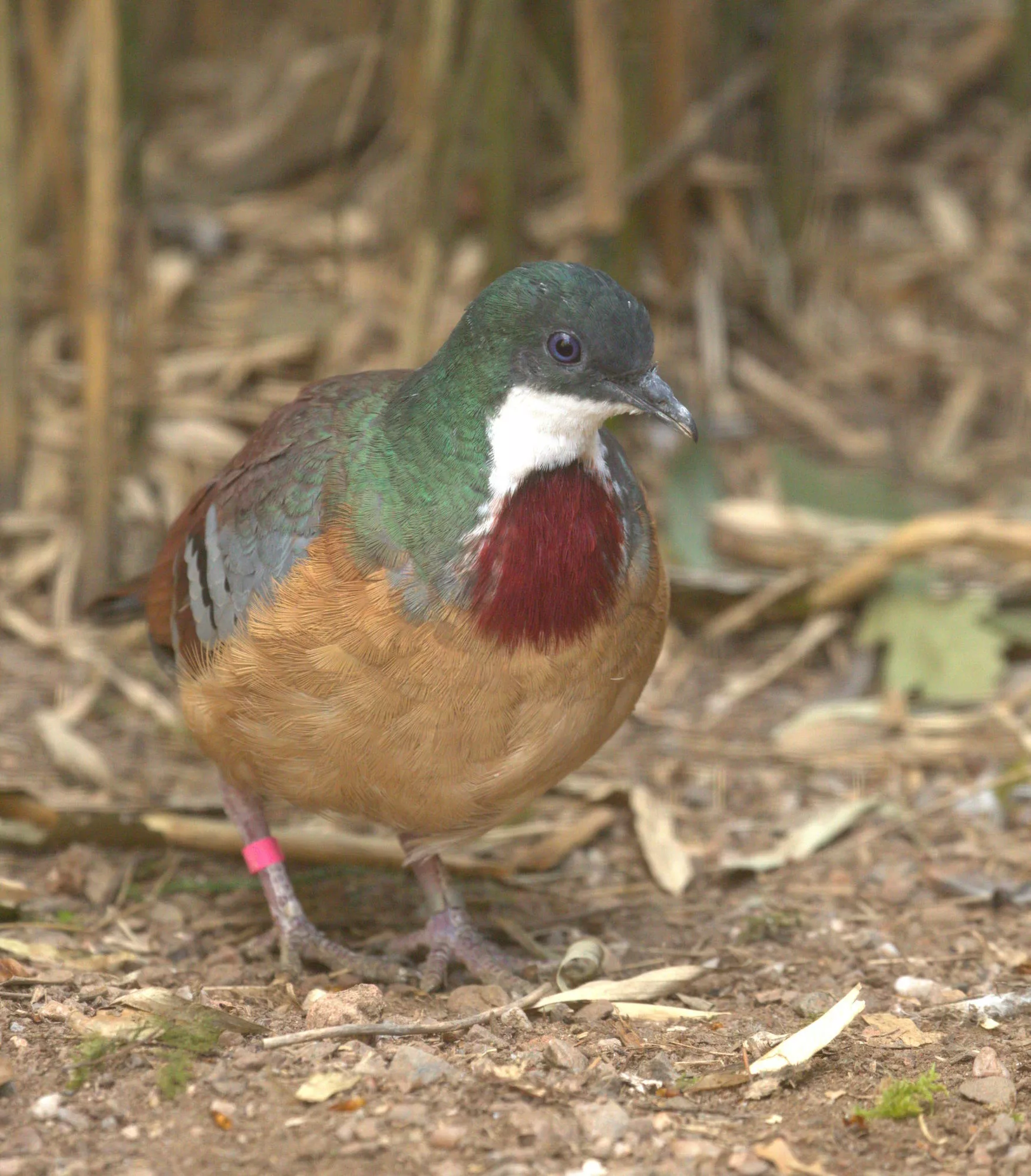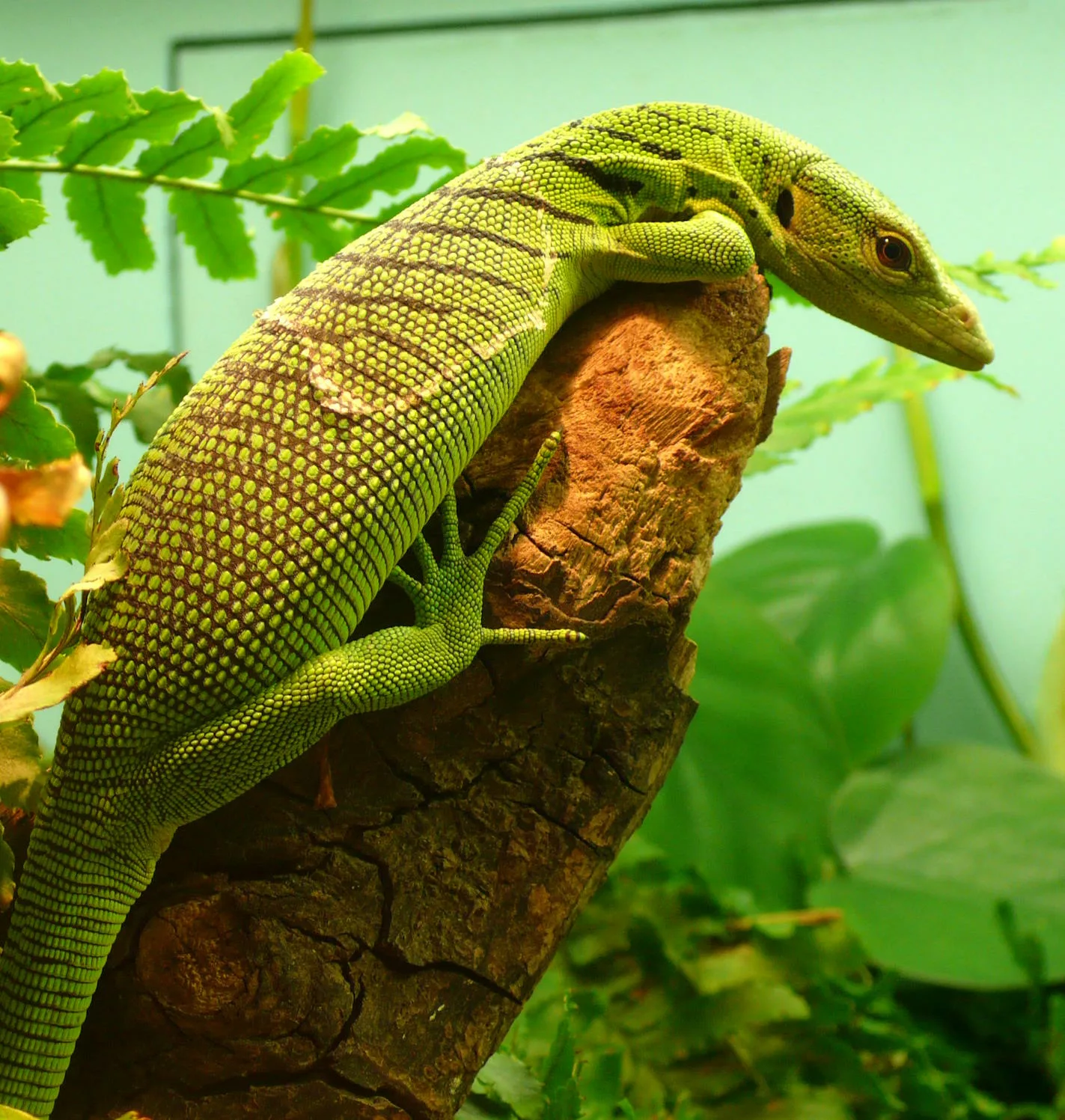
Blue-winged kookaburra
Scientific name: Dacelo leachii
IUCN listed as: Least Concern
Learn before you visit!
Here are some facts about the species – Discover what they eat, find out about their natural habitat, see what they like to do, and more… Set the reading style to suit you too, everyday speak or something aimed towards children.
Child-friendly
Everyday
Diet
Blue-winged Kookaburras primarily feed on insects, small mammals, lizards, frogs, and occasionally fish. They are known for their distinctive laughing call, which they use to communicate with each other and to mark their territory. In captivity, they are fed a diet that includes small rodents, insects, and a variety of other foods to ensure they receive all necessary nutrients.
Blue-winged Kookaburras love eating insects, small animals like mice, lizards, and sometimes fish. They have a funny laugh they use to talk to each other and show where they live. When they’re in zoos, they eat small animals and insects to stay healthy.
Breeding
During the breeding season, Blue-winged Kookaburras form monogamous pairs. They nest in tree hollows, where the female lays 2 to 3 eggs. Both parents take turns incubating the eggs for about 24 to 26 days. After hatching, the chicks are cared for by both parents and fledge from the nest after about 30 days.
When Blue-winged Kookaburras want babies, they find a safe hole in a tree to build a nest together. Mum lays 2 to 3 eggs, and both parents take turns keeping them warm for about 24 to 26 days. Baby birds are looked after by both parents until they leave the nest at about 30 days old.
Habitat
Blue-winged Kookaburras are native to northern Australia and southern New Guinea, where they inhabit forests, woodlands, and savannas near water sources. They prefer areas with tall trees for nesting and open spaces for hunting. These birds are adaptable and can also be found in urban areas and parks where suitable habitat is available.
Blue-winged Kookaburras come from northern Australia and southern New Guinea, where they live in forests and grasslands near water. They like places with tall trees to build nests and open spaces to hunt for food. These clever birds can also live in cities and parks if there are enough trees.
At the zoo
In zoos, Blue-winged Kookaburras are housed in aviaries that resemble their natural habitat. They are provided with a diet similar to what they eat in the wild, including small mammals, insects, and fish. Zoos also participate in breeding programmes to help conserve these kookaburras and educate visitors about their behaviour and habitat requirements. Enrichment activities such as puzzle feeders and perches are provided to keep them mentally and physically stimulated.
In zoos, Blue-winged Kookaburras live in big cages that look like their forest homes. They eat small animals, insects, and sometimes fish, just like they do in the wild. Zoos help them have babies and give them toys to play with.
Behaviour
Blue-winged Kookaburras are social birds that live in family groups or pairs. They are known for their distinctive laughing call, which they use to communicate with each other and to establish territory boundaries. These birds are skilled hunters, perching on branches or wires and swooping down to catch prey on the ground. They are diurnal, meaning they are active during the day, and spend much of their time hunting, socialising, and maintaining their territory.
Blue-winged Kookaburras like being with other birds in their families or with one special friend. They talk with a funny laugh to talk to each other and tell other birds where their home is. They’re great hunters and can sit on branches or wires, then swoop down to catch food on the ground. These birds are busy during the day, finding food, talking to their friends, and protecting their home.
Fun facts
- Laughing Calls: Blue-winged Kookaburras have a loud laugh that sounds like they’re chuckling. They use it to talk to each other and mark their territory.
- Skilled Hunters: They are excellent at catching insects and small animals by swooping down from their perches.
- Family Birds: Blue-winged Kookaburras live with their family or a special friend, staying close together.
- Nest Builders: They build their homes in holes in trees, where they sleep and keep their eggs safe.
- Australian Natives: These birds are native to Australia and can be found in forests and parks.
- Laughing Calls: Blue-winged Kookaburras have a loud laugh that sounds like they’re chuckling. They use it to talk to each other and mark their territory.
- Skilled Hunters: They are excellent at catching insects and small animals by swooping down from their perches.
- Family Birds: Blue-winged Kookaburras live with their family or a special friend, staying close together.
- Nest Builders: They build their homes in holes in trees, where they sleep and keep their eggs safe.
More animals to discover at our zoo
Quick Links
Tickets & Prices
You can buy tickets for Exmoor Zoo securely online, as well as finding out more price options, discover offers, and more…
What’s on…
Exmoor Zoo hosts incredible Events all through the year. You can find out about what we’ve got in store here…
Routes & info
Like any great discovery, Exmoor Zoo can feel a little off the beaten path – but don’t worry – you can plan your journey with our recommended routes and other useful travel info.



























